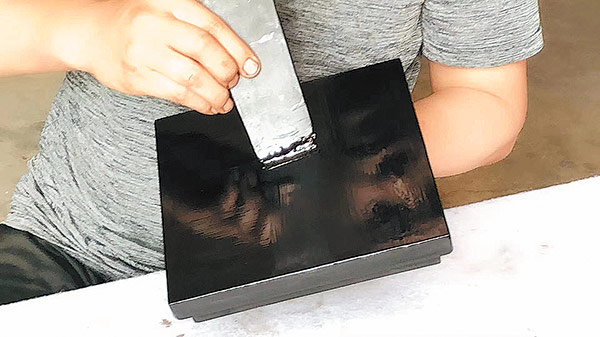

Road to success
Xue was introduced to lacquer art by his father.
"My dad began making lacquerware from a very young age. He worked his way up from being an apprentice to the shopkeeper of a time-honored store in Pingyao," Xue says.
In 1953, at the age of 16, Xue started painting, inspired by local artists who created theatrical backgrounds at the Pingyao Cultural Scenery Society. Two years later, he had mastered the skill and was making a living out of it, and that was when he decided to seriously pursue the handicraft trade.
Opportunities came knocking in 1958, when a polished lacquer factory was founded in Pingyao. Xue was among the first artists to be recommended to work at the factory, where he was under the tutelage of lacquerware master Qiao Quanyu.
"Qiao held nothing back when he taught me, but the learning curve wasn't smooth," Xue says. Before they realized, the plant was on the verge of bankruptcy. "We had overstocked lacquerware and the going got really hard," he recalls. Everyone at the factory was scraping by on rustproof lacquer and glass painting they had produced.
It was not until 1964, when a Beijing company in foreign trade came along, bought all the lacquerware and placed new orders, that things turned around. The renewed appreciation of local lacquer art put the factory back on its feet.